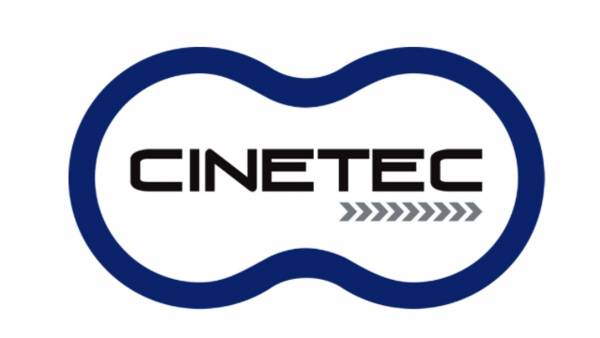Although the "engine" of the industry right now is the movement towards high-definition video, many of the proposals that the industry has generated are aimed at solving the immediate problems of U.S. free-to-air television operators.
The challenge of fully digitizing terrestrial television broadcasting in one of the world's largest markets is a source of business opportunities that would be foolish to waste... that is why we found a complete repertoire of solutions for these concerned broadcasters, facing one of the most difficult moments in their history.
The price of convergence...
The industry proposes formulas according to the needs of each of these operators, and offers apparently perfect "packages", to respond to the needs of each one. In a somewhat cartoonish way, and simplifying things a lot, let's review some hypothetical situations.
Scenario 1: Are you a small operator, covering a city of 200,000 inhabitants and adjacent rural areas? Limit yourself to digitizing your transmission and fixing the links to be able to retransmit HD signals.
Scenario 2: Are you in an intermediate market, covering any large cities and suburban areas? In addition to intervening in the broadcast phase, you'd better think about bringing your local studios to HD, at least partially. Remember that you can't let the competition get ahead.
Scenario 3: Are you in the top 20 of american channels? Ask the chain for financing and digitize EVERYTHING! Good thing it started last year...
We see then that the industry proposes a broad route for migration to the DTV environment, which basically begins by solving in a minimalist way the issue of the digitization of transmission.
The motto of the proponents of this proposal is that, after all, no one is demanding an immediate migration to HDTV... it is about using one of the schemes proposed by the ATSC, which include a couple of SD options.
The catch is in the supposed pressure that the public will exert to receive HD signals. The entire industry is mobilizing to meet that demand, which is a little uncertain for those who write checks on television stations.
This brings us to the key question of the coming years: What is going to sell more, the set-top boxes that will allow DTV to be watched on analog receivers, or the latest model digital receivers? Ultimately, the consumer market will decide whether or not it is necessary to improve the technical quality of terrestrial television.
As a side note, let's remember that the vast majority of North American consumers have said they are very satisfied with their US$100 VHS equipment, and very few want to invest in DVD players. Faced with situations like this, it is worth asking: Where will the increase in the volume of DTV receiver manufacturing come from, which, supposedly, will allow a price drop?
The divergence market...
If we try to apply these schemes to our market, we will soon discover that NAB's answers '99 do not work for Latin America. For the past twenty-five years or so, it was prudent to follow the guidelines of the U.S. television market when it came to adapting technology to our medium.
After all, the evolution was calculated in changes restricted to workplaces. There was talk of new control systems, better quality recording formats, or more sophisticated cameras... but not to radically change the transmission systems.
In the first instance, we don't have to respond to the FCC's directive regarding migration to DTV. If we analyze the internal conditions of our national markets we will find that it is definitely not time to implement major technological changes, and less when these require significant investments by our viewers, who will definitely prefer to enter the market of the "magic boxes" rather than invest a few thousand dollars in a digital receiver.
Obviously, pay-TV consumers will be motivated to invest in new equipment when cable and satellite TV providers start offering them HD services... but a very comprehensive statistical analysis is not needed to deduce that this relatively small equipment base would not be able to support terrestrial television operations with simulcasting. After all, pay-TV households, the favorites of advertisers, will be dedicated to "getting the most out" of their investment, and will surely leave local television quite abandoned.
On the other hand, most countries in the region do not have a regulatory framework that allows us to accommodate the transition in a rational way. Most likely, we will adopt the ATSC recommendations and the FCC's frequency assignments like sheep... but in some countries there are going to be a number of very interesting conflicts in the use of the electromagnetic spectrum. Has anyone checked lately what goes through the sides of the 18Ghz?
In addition, when the simulcasting period in the United States ends and the VHF/UHF frequencies, which were being used for analog television, are definitively released, these segments will be used by the operators of new services, who may want to extend their friendly tentacles to our countries... and at that time there is going to be some kind of pressure to migrate to other bands.
Let's think that, in a few years' time, our governments may welcome the possibility of licensing new wireless services at astronomical costs for operators.
Looking sideways...
Either way, HD production has clearly defined niches in our market. We already find state-of-the-art equipment in the main commercial production centers, and surely the big soap opera producers will want to respond to the practical demands of the North American market, and perhaps the European one.
But the local broadcast market needs to move more slowly... It will be necessary for us to adopt new technologies very carefully, constantly looking for new business opportunities and without hasty movements.
The keyword is still segmentation. We may still be an analog TV market for a few years, but that doesn't mean we should put the issue aside. Is it necessary to renew transmission equipment? It would be foolish not to set up a system capable of broadcasting HDTV.
It may be a good idea to lobby somewhat to promote the regulation of DTV frequencies. Or start looking for satellite segments for high-definition links. You definitely have to start investing in human capital: Training is productivity. And we must carefully analyze the results of the long-suffering American broadcasters, who are forced to migrate right now.
























Leave your comment